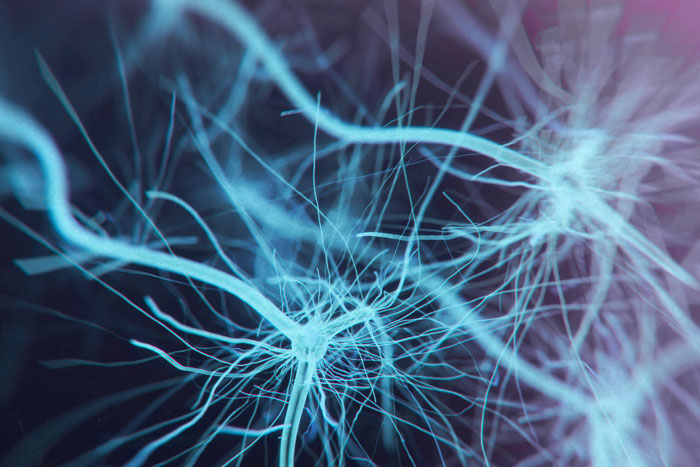What do you think of this article?
By Dr. David Woo - March 25, 2019

Transcranial magnetic stimulation (TMS) is a painless non-invasive treatment method used to relieve symptoms of major depression. TMS has been proven by numerous studies to successfully reduce symptoms of depression without the adverse effects associated with antidepressant medications. (1,2) But until recently, there has been little research on understanding the exact mechanism that makes TMS successful.
TMS uses magnetic fields to stimulate the parts of the brain associated with mood regulation, but how exactly do these magnetic fields alter the brain to relieve depressive symptoms? First, let’s look at how TMS is currently understood.
How Does TMS Work?: An Overview
TMS is performed as an outpatient procedure administered in approximately 20-minute sessions. During the procedure, a coil is placed over the head in the targeted area. The magnetic field emitted from the coil generates an electrical current in the brain. This electrical current stimulates specific neurons (brain cells) that weren’t activated before. When activated, these neurons release more neurotransmitters. Neurotransmitters are chemicals that allow neurons to communicate with one another and form pathways between different regions of the brain. In the case of TMS, neurons in the left dorsolateral prefrontal cortex are activated to stimulate the mood pathway of the brain and regulate mood. (2,3)
New Evidence Shows That TMS “Resets” Neurons
A recent study shows that TMS affects how neurons connect to each other, essentially influencing the neural network. More specifically, this study showed that TMS makes neuronal connections vulnerable to reorganization. During this study, researchers observed neuron activities in cats in the visual cortex of the brain (the part of the brain that processes visual information). The cats were exposed to the same visual stimuli both before and after TMS, during which, neuron behavior was recorded. Researchers noticed that after TMS, neurons responded in a less defined way — meaning that they didn’t show a preference for any specific orientation.
Researchers then added an extra step. After TMS treatment, researchers exposed cats to 20 minutes of visual stimuli different to that shown before TMS treatment in hopes of training the neurons to communicate using new pathways. The visual exercise after TMS treatment actually caused new neural pathways to be created. Furthermore, neurons showed a preference for the pathways created during the post-TMS training even hours afterward. This suggests that after a TMS session, neurons are pliable and able to change the way they connect and communicate, essentially reshaping the neural network. (4,5)
New Technologies Allow For Future Research
Previously, scientists were unable to observe the effects of TMS on a cellular level in the brain because the available technologies used to measure electrical pulses, like electroencephalography (EEG), are disrupted with the use of magnetic fields. (5)
A new technology using a shielding technique allows scientists to observe neuron activity in real time after just a single pulse of TMS. (6,7) This technology will allow scientists to continue researching the exact mechanisms of TMS and its effect on the brain.
Have Questions About How TMS Relieves Depressive Symptoms?
If you have questions about how TMS works to relieve symptoms of depression, contact our office. At Madison Avenue TMS & Psychiatry, we’re available to answer your questions and guide you through your treatment options.
Resources:
1. Carpenter LL, Janicak PG, Aaronson ST, et al. Transcranial magnetic stimulation (TMS) for major depression: A multisite, naturalistic, observational study of acute treatment outcomes in clinical practice. Depression and Anxiety. 2012;29(7):587-96. Link. Accessed March 17, 2019.
2. Dunner DL, Aaronson ST, Sackeim HA, et al. A multisite, naturalistic, observational study of transcranial magnetic stimulation for patients with pharmacoresistant major depressive disorder: Durability of benefit over a 1-year follow-up period. The Journal of Clinical Psychiatry. 2014;75(12):1394-401. Link. Accessed March 17, 2019.
3. Neurostar mechanism of action. YouTube: Neurostar Advanced Therapy. Link. Published on Nov 29, 2016. Accessed March 17, 2019.
4. Kozyrev V, Staadt R, Eysel UT, and Jancke D. TMS-induced neuronal plasticity enables targeted remodeling of visual cortical maps. June 2018;115(25):6476-6481. Link. Accessed March 17, 2019.
5. Ruhr-University Bochum. What effect does transcranial magnetic stimulation have on the brain? Published June 5, 2018. Link. Accessed March 17, 2019.
6. University of Tübingen. What magnetic fields do in the brain — and how to observe brain activity during transcranial magnetic stimulation. Published January 30, 2018. Link. Accessed March 17, 2019.
7. Li B, Virtanen JP, Oeltermann A, Schwarz C, Giese MA, Ziemann U, and Benali A. Lifting the veil on the dynamics of neuronal activities evoked by transcranial magnetic stimulation. eLife. 2017;6. Link. Accessed March 17, 2019.
Dr. David Woo is the owner and head clinical psychiatrist at Madison Avenue TMS and Therapy in New York City. Dr. Woo has been seeing patients in private practice since 2002, always with the goals of combining evidence-based medicine with psychodynamic psychotherapy and collaborating with other mental health professionals to ensure the best possible outcomes for his patients. He has been certified to administer TMS at his practice since 2017. His greatest clinical interests include helping patients suffering from depression, anxiety, and obsessive compulsive disorder.
Follow Dr. Woo On









